In our Recent Research series, curator Heidi Taylor-Caudill shares answers to questions sent to the Audubon Museum about John James Audubon and his family, the museum’s collection, and the history of John James Audubon State Park.
In June 2020, we received a question about the provenance (record of ownership) of our copy of John James Audubon’s Double Elephant Folio of The Birds of America. The Audubon Museum at John James Audubon State Park holds one of the few complete sets of this publication known to exist today. The person who contacted us wanted to know where our Double Elephant Folio came from and how we acquired it.
Before we delve into the history of our museum’s copy, let’s talk about Audubon’s Double Elephant Folio project. Published between 1827 and 1838, this beautiful four-volume set of The Birds of America is considered to be John James Audubon’s masterpiece. It contains 435 hand-colored engravings of 1,065 birds that supposedly represent all known species in the United States at the time. Audubon wanted to show the birds at life size, so he selected to use “double elephant” size paper (approximately 26 1/4 x 39 1/2 inches, the largest sheets available then). This edition is commonly known as the Double Elephant Folio due to the size of the paper chosen for the publication.
Engraving, printing, and coloring these over-sized prints was enormously expensive. To finance the project, Audubon sold subscriptions to his work on a pay-as-you-go plan. Subscribers would receive prints in sets of five called “parts.” Each part came with one large, one medium, and three small images, all printed on the same double elephant size paper. Audubon eventually published 87 five-print parts, totaling 435 prints (Steiner, 43).
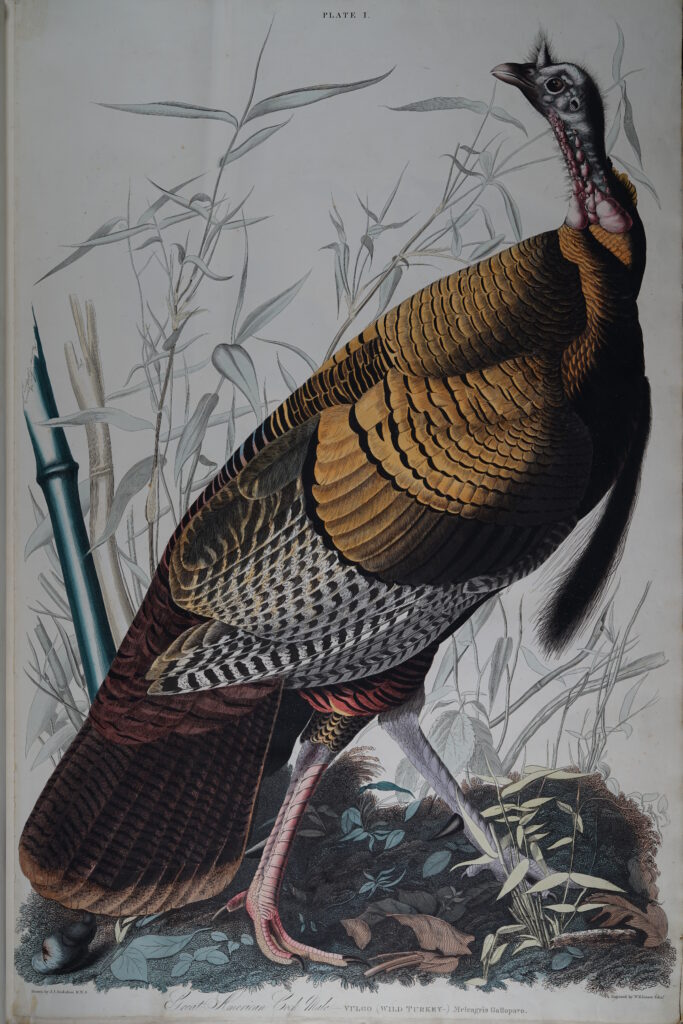
Wild Turkey, Plate 1 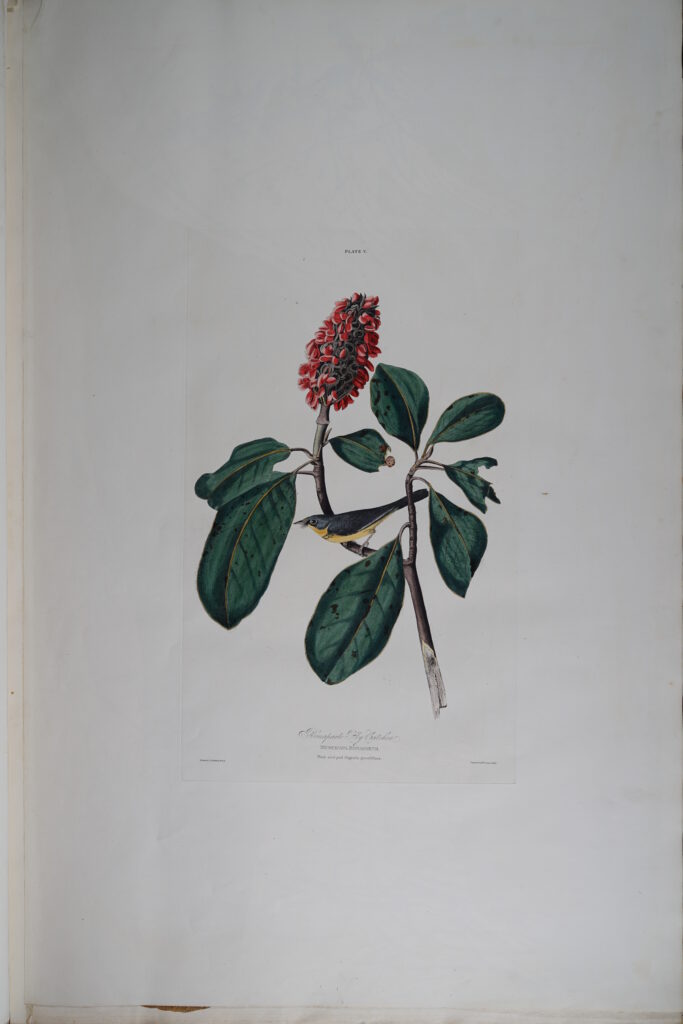
Bonaparte’s Flycatcher, Plate 5 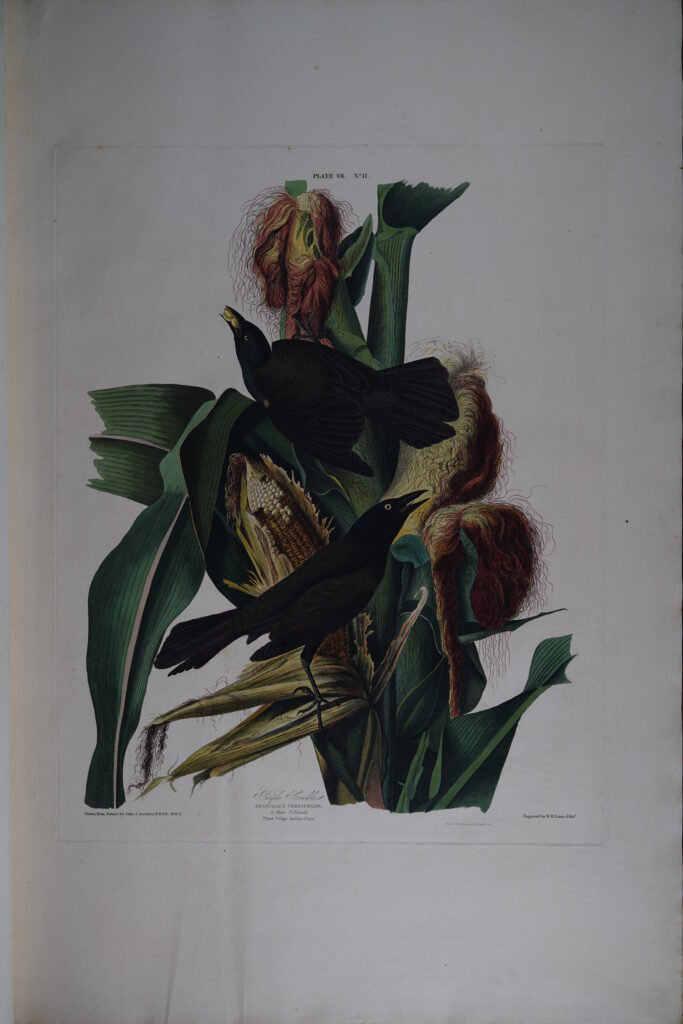
Purple Grakle, or Common Crow Blackbird, Plate 7 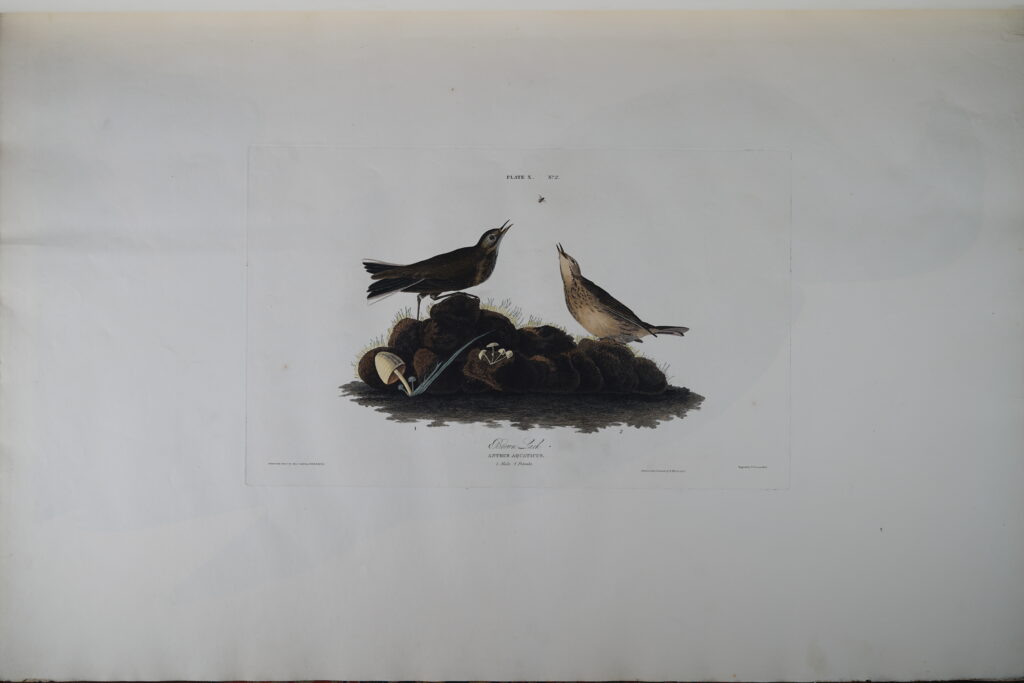
Brown Lark, Plate 10 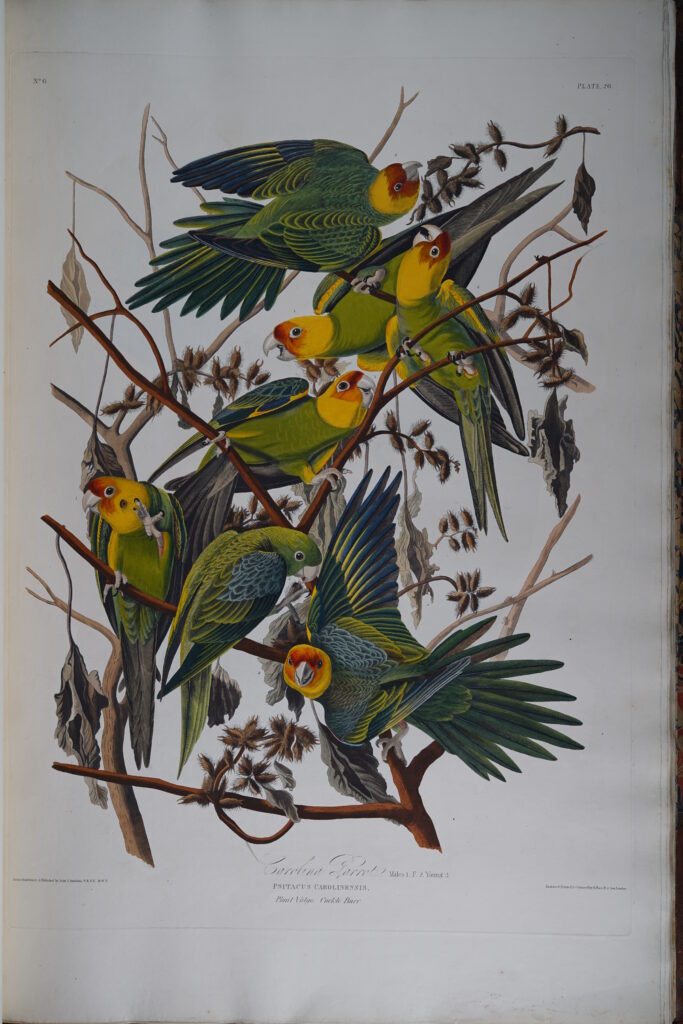
Carolina Parrot, Plate 26 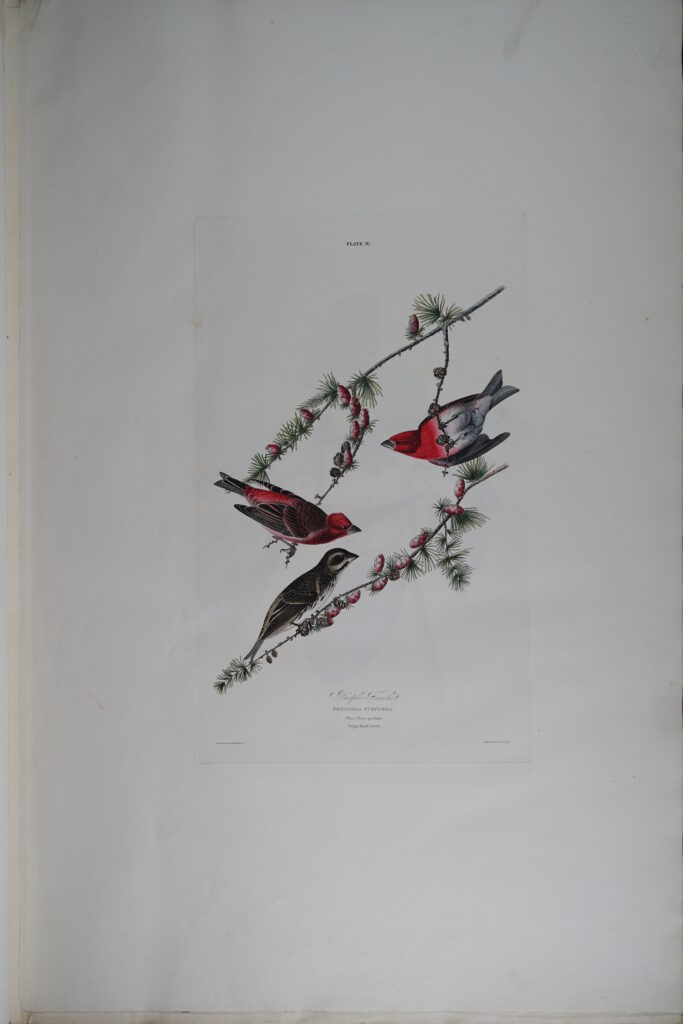
Purple Finch, Plate 4 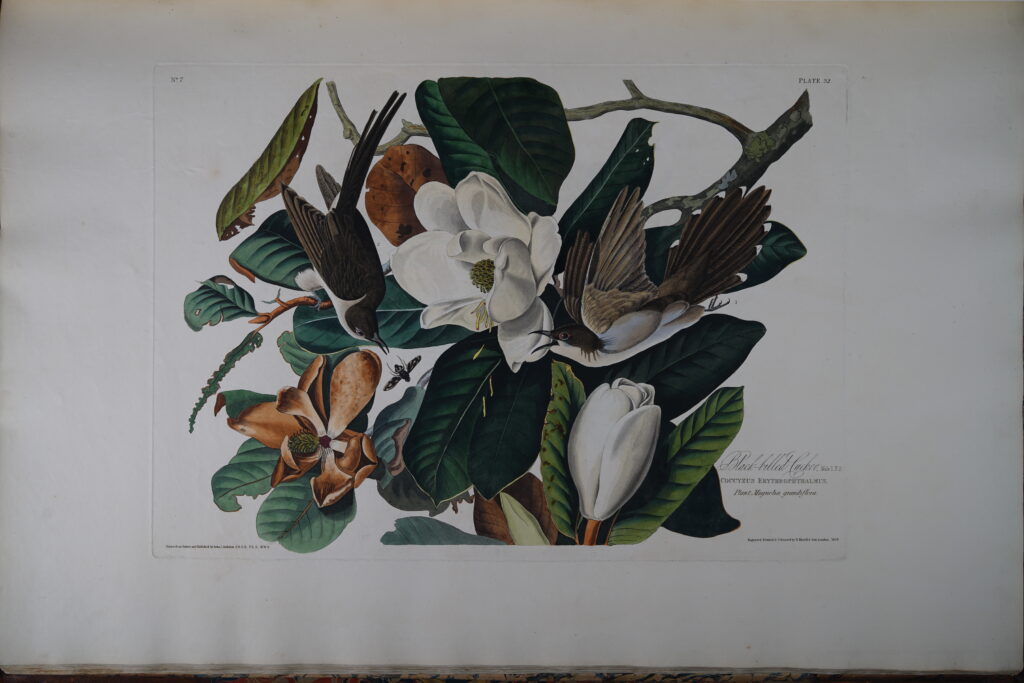
Black-billed Cuckoo, Plate 32
John James Audubon State Park Museum Collection, JJA.1971.1
Audubon intended that the prints be bound together into huge, four-volume sets of books. Many subscribers commissioned their own bindings of the prints, and Audubon and his publisher Robert Havell, Jr., sold quite a few sets as bound volumes. He did not conceive that people would want to collect loose prints from this publication. Yet almost as soon as subscribers received the first set of prints, some chose to break apart their set and resell individual prints. The practice continued for over a century with owners breaking up complete sets of the Double Elephant Folio to feed the market for loose Havell prints (Steiner, 47). As complete, intact, four-volume sets became rarer, their value and desirability to Audubon collectors increased.
Audubon print expert Bill Steiner estimates that between 180 and 190 complete sets of Audubon’s double elephant folio of The Birds of America were produced and sold. Of these, 41 sets are known to have been broken up to sell as individual prints and 10 are known to have been destroyed. Today, only 120 complete sets are believed to exist in private hands and in institutions like museums, libraries, and universities (Steiner, 48). Our museum at John James Audubon State Park is fortunate to hold one of these very rare, intact sets of the Double Elephant Folio.
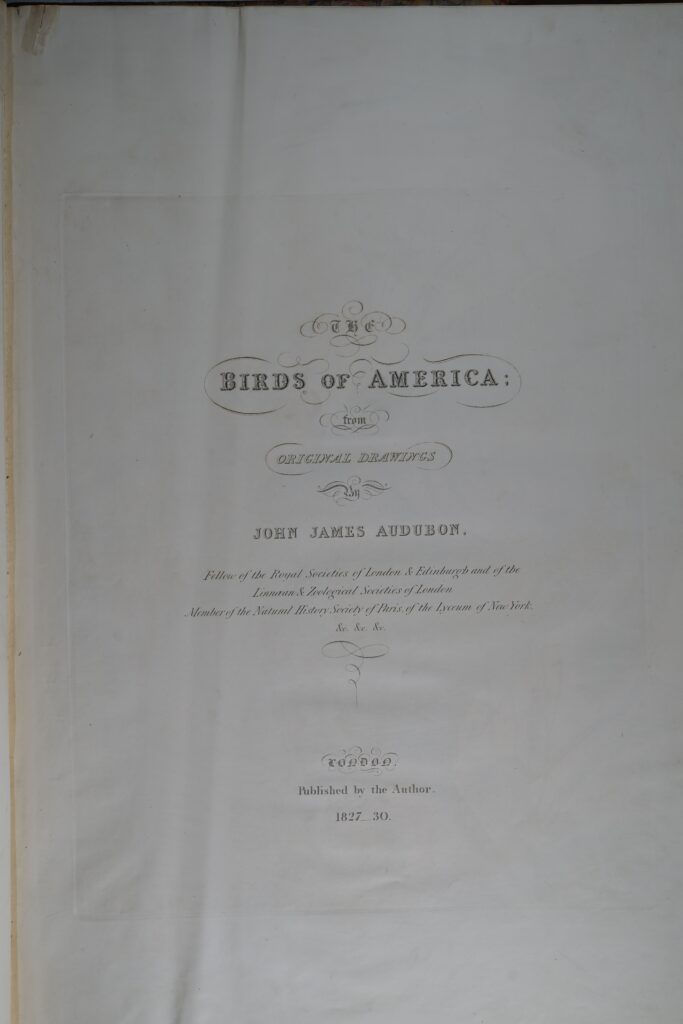
John James Audubon State Park Museum Collection, JJA.1971.1a
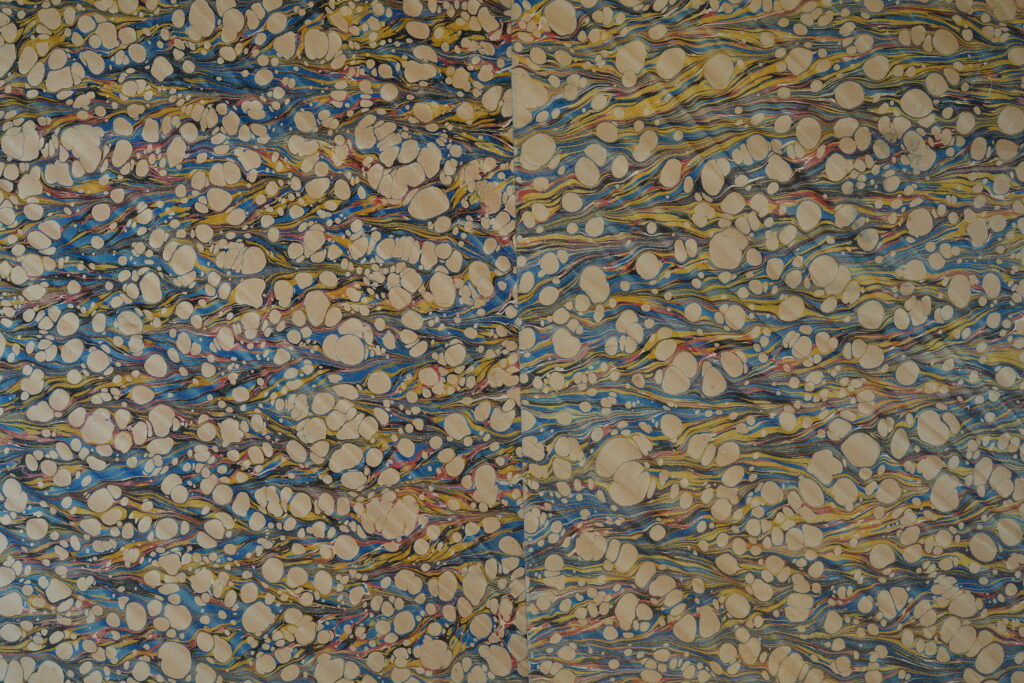
John James Audubon State Park Museum Collection, JJA.1971.1

Volume 4 of the Audubon Museum’s Double Elephant Folio set of The Birds of America
John James Audubon State Park Museum Collection, JJA.1971.1
So when and how did these books come to our museum?
From curatorial records, we can trace the provenance of our Double Elephant Folio starting with the original owner, Thomas Walker of Killingbeck Hall near Leeds, England. He was a very early supporter of Audubon and The Birds of America, subscribing sometime around early May 1827. His set remained in the Walker family until 1920, when it was purchased by Dr. Robert Cushman Murphy (1887-1973), an Audubon scholar and ornithologist at the American Museum of Natural History. Dr. Murphy sold the set in 1935 to a prominent amateur ornithologist named Marcia Brady Tucker (1884-1976). She was a board member of the National Audubon Society and a benefactor to the Audubon Museum in Henderson. In 1970, Mrs. Tucker donated the set to the Audubon Museum at the same time that she donated her library of rare books on ornithology, natural history, and the history of exploration to the Smithsonian. For the last 50 years, we have been pleased to share this wonderful copy of the Double Elephant Folio with our museum visitors.
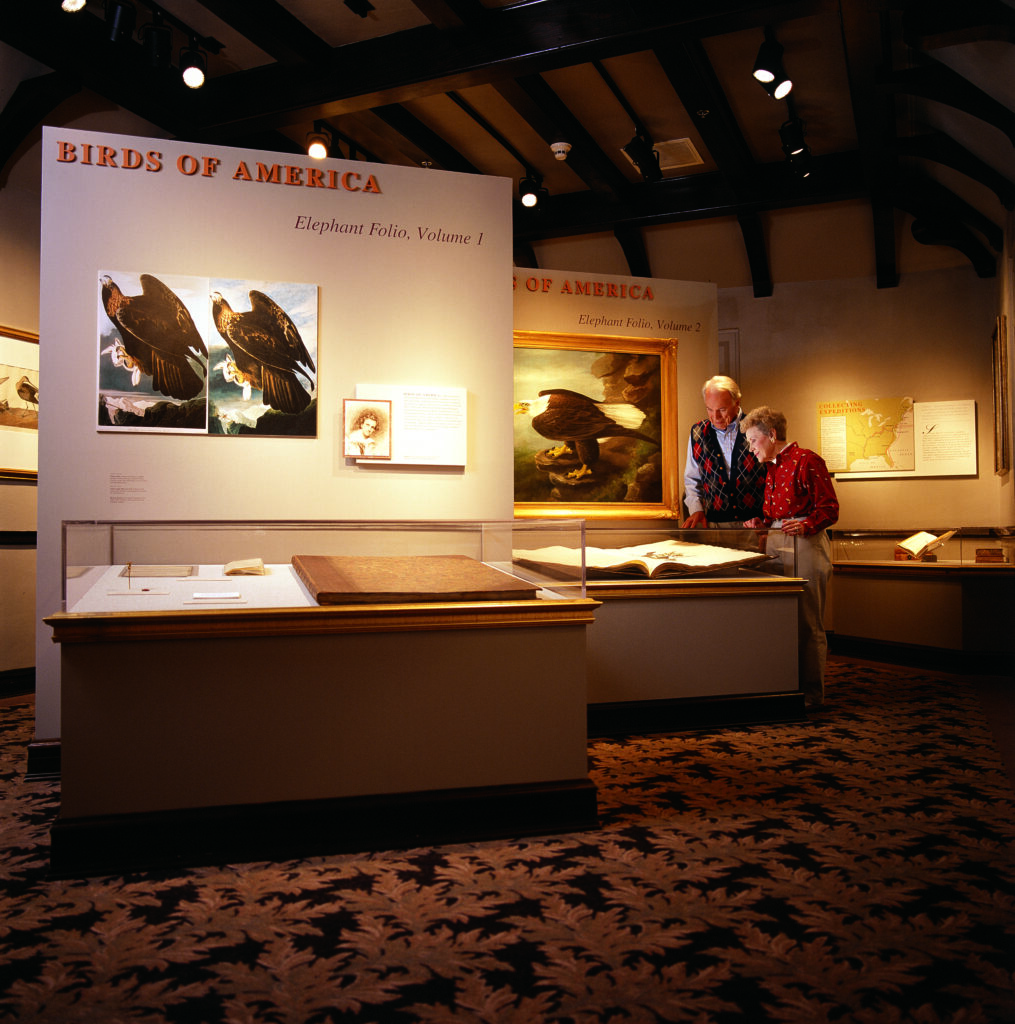
The Double Elephant Folio is currently on exhibit in Gallery C of the Audubon Museum at John James Audubon State Park. Once a month we turn the pages of the open volume on display, as both a protective measure against light exposure and to offer a new image for visitors to see.
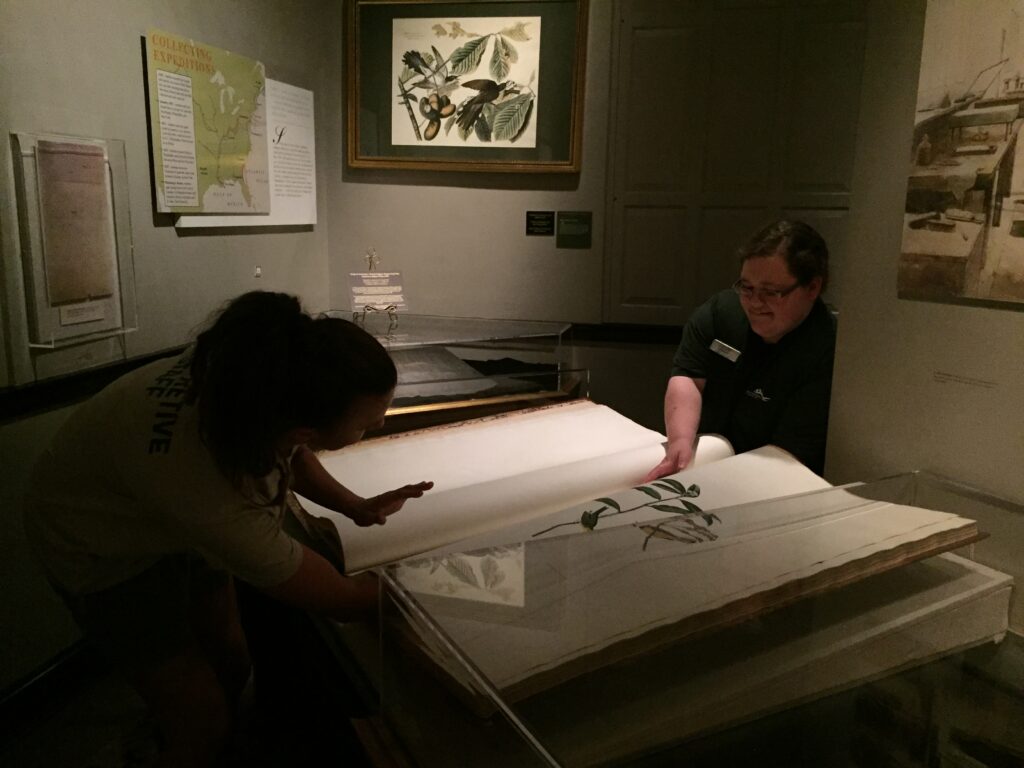
Consider visiting the Audubon Museum at John James Audubon State Park to view our Double Elephant Folio and the many other Audubon art and artifacts on exhibit here. We’re open seven days a week, 10 a.m. to 5 p.m. CDT (currently closing between 1-2 p.m. for cleaning). For more information about the museum and park, visit https://parks.ky.gov/henderson/parks/historic/john-james-audubon-state-park.
Do you have a question about John James Audubon, the Audubon Museum, or the history of John James Audubon State Park? Feel free to contact me at 502-782-9716 or [email protected].
This blog post was written by Heidi Taylor-Caudill, Curator of the John James Audubon State Park Museum.
SOURCES:
- Steiner, Bill. Audubon Art Prints: A Collector’s Guide to Every Edition. Columbia, SC: University of South Carolina, 2003.

